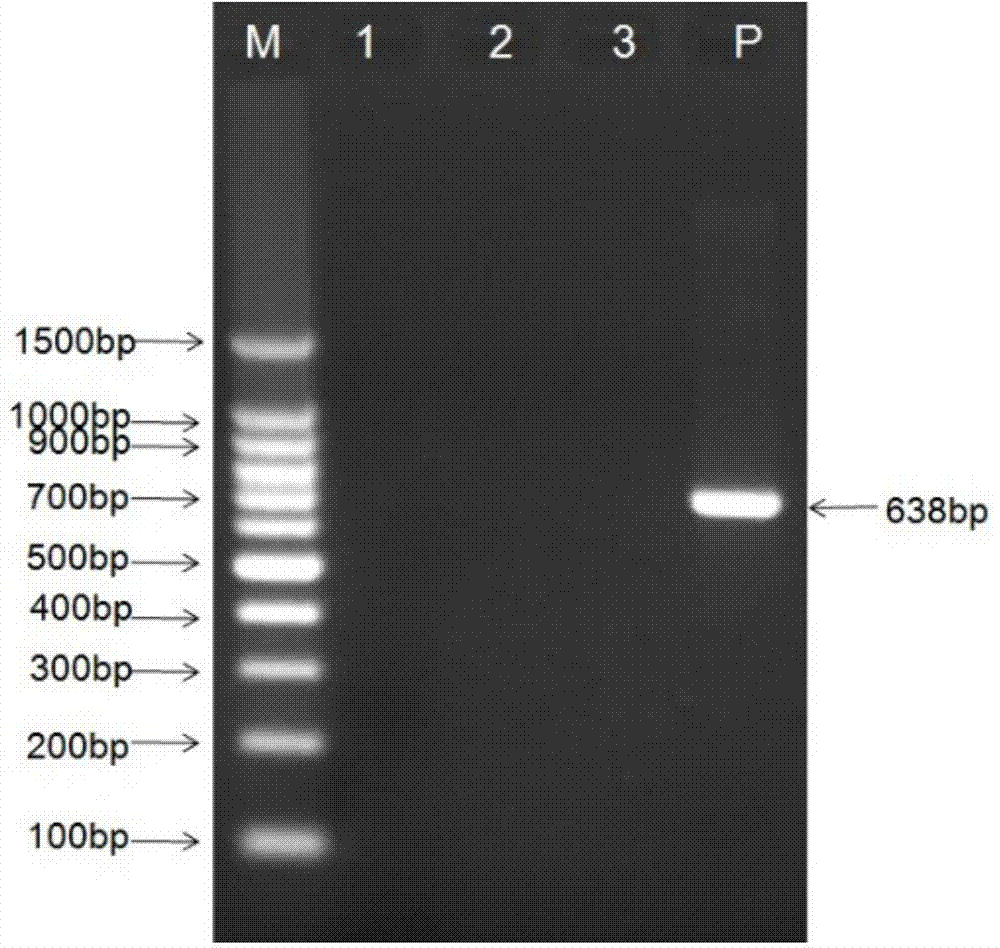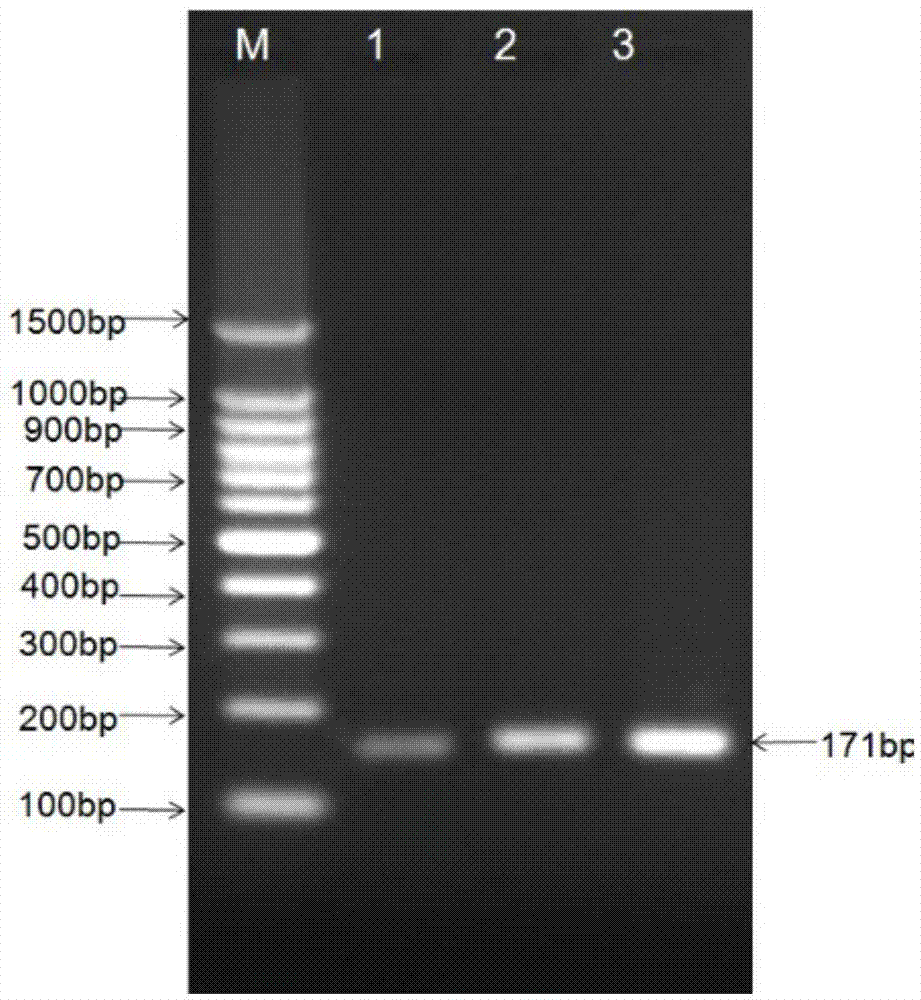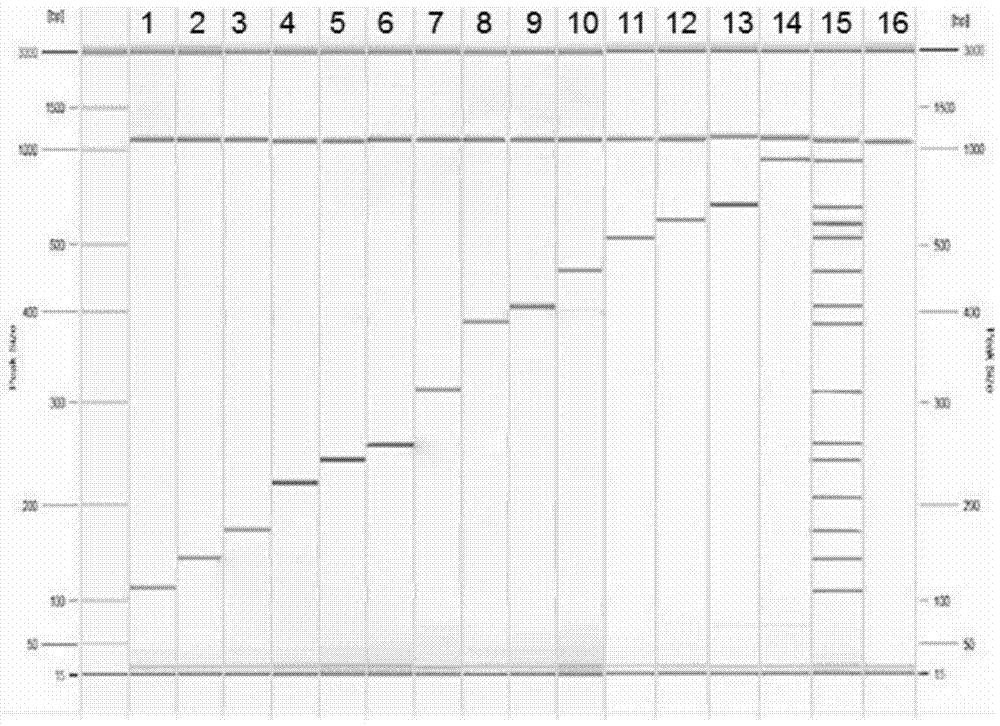Fourteen-food-borne pathogenic bacterium multiplex PCR detection primer set and kit
A technology of food-borne pathogenic bacteria and primer sets, applied in the field of microbial detection, can solve the problems of affecting the sensitivity of detection reagents, large investment, and complicated operation.
- Summary
- Abstract
- Description
- Claims
- Application Information
AI Technical Summary
Problems solved by technology
Method used
Image
Examples
Embodiment 1
[0092] The primer design and synthesis of embodiment 1 Salmonella
[0093] Download 65 full-length sequences of Salmonella invA genes from Genbank, import the 65 full-length sequences of invA genes into the Mega4 software, use the alignment function to compare and analyze the conserved sequences of the invA genes, and obtain conserved sequence segments. The base sequence is as follows: Listed as shown in SEQ ID No.32.
[0094]Input the above-mentioned conserved sequence of the invA gene into the primer premier6 software, and automatically analyze and obtain various primer design schemes. On this basis, the primer position and sequence length were manually adjusted, the Tm value was set at 55±5°C, the GC content was 35%-60%, and hairpin structures and primer dimers were not generated as much as possible, and no false priming occurred. Perform Blast analysis on the primer design plan obtained by the above manual adjustment on the NCBI website. If any primer pair has cross-react...
Embodiment 2
[0099] Embodiment 2 Salmonella primer screening test
[0100] Bacterial groups assessed for specificity: including Shigella, Vibrio parahaemolyticus, Campylobacter jejuni, Campylobacter coli, Staphylococcus aureus, Bacillus cereus, Listeria monocytogenes, Enterocolitis Fourteen kinds of detection target bacteria in the kit, including Yersinia, Enterobacter sakazakii, Escherichia coli, Vibrio cholerae, Escherichia coli O157, Aeromonas hydrophila, etc. Bacteria with similar target species and the same living environment, such as Vibrio river, Bacillus anthracis, Bacillus wesleyi, Listeria ovis, Bordetella pertussis, Legionella, and Streptococcus.
[0101] For the above-mentioned bacteria, a bacterial genome extraction kit was used to obtain DNA templates for future use. Take 5ul of each extracted template and mix well, as the template for specificity verification.
[0102] Specific analysis test for Salmonella: use the primer pair designed in Example 1, configure the PCR react...
Embodiment 314
[0112] Example 314 Formation of multiple PCR detection kits for common food-borne pathogenic microorganisms
[0113] The kit consists of 2× reaction system buffer, DNA polymerase, 10× primer mixture, positive control, and deionized water. The specific components are as follows: 2×PCR Buffer (Tris HCl 40mM (PH8.3), KCl 100mM, tween-200.08%, 0.0006ng / ulpET28a, 1mm dNTP, 8mm MgCl2); 25× DNA polymerase: 2U / ul; 10× primer mixture (including specific primers and IAC primers, according to the detection purpose and electrophoresis platform Determine the type of primer mixture and the number of tubes), positive control (14 kinds of food-borne pathogenic bacteria mixed template, 10 for each 6 CFU / ml).
[0114] The reaction system for kit detection is 25ul, and its configuration is as follows: 2×PCR Buffer12.5ul; 25×DNA polymerase 1ul; 10×primer mixture (determine the type of primer mixture and the number of tubes according to the detection purpose and electrophoresis platform) 2.5 ul;...
PUM
 Login to View More
Login to View More Abstract
Description
Claims
Application Information
 Login to View More
Login to View More - R&D
- Intellectual Property
- Life Sciences
- Materials
- Tech Scout
- Unparalleled Data Quality
- Higher Quality Content
- 60% Fewer Hallucinations
Browse by: Latest US Patents, China's latest patents, Technical Efficacy Thesaurus, Application Domain, Technology Topic, Popular Technical Reports.
© 2025 PatSnap. All rights reserved.Legal|Privacy policy|Modern Slavery Act Transparency Statement|Sitemap|About US| Contact US: help@patsnap.com



